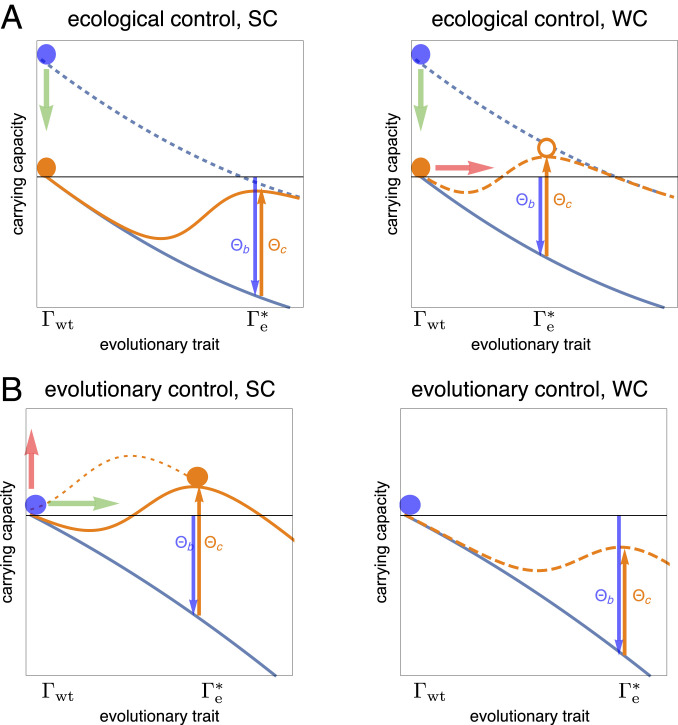Fig. 1.
Modes and leverage of eco-evolutionary control. A pathogen population with mean trait under control with amplitude lives in a free fitness landscape (orange lines), which is the sum of a background component (blue lines) and a control landscape . An evolutionary path from the wild type to an optimal evolved state involves the control leverage (orange arrows) and a change in background free fitness, (blue arrows). (A) Ecological control, starting from an uncontrolled wild-type pathogen (blue dots), has the objective of reducing the pathogen’s carrying capacity (green arrows)—here by antibody binding—and the collateral effect of resistance evolution (red arrows). SC () suppresses the evolution of resistance and generates a stable wild type (orange dot; i.e., the reverse path from to fulfils the minimum-leverage condition [5]). WC () triggers the evolution of resistance (orange circle). (B) Evolutionary control has the objective of eliciting a new pathogen trait (green arrow) and the collateral of increasing its carrying capacity (red arrow). Dynamical control elicits the evolved trait along a path of positively selected trait increments, which requires elevated transient control amplitudes (dotted orange line). SC () generates a stable evolved trait (orange dot; i.e., the path from to fulfils the minimum-leverage condition [5]). WC () cannot elicit an evolved state (or triggers a reversal to the wild type).

